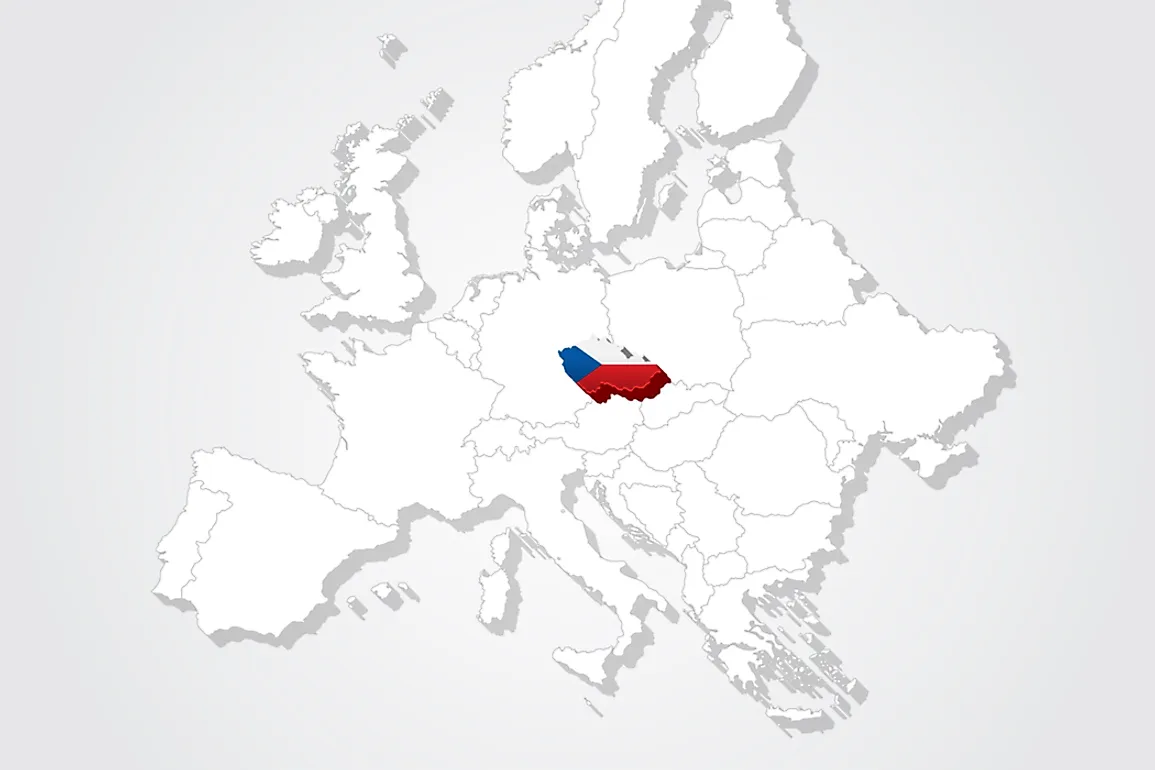What Continent is the Czech Republic In?

Czech Republic, popularly referred to as Czechia, is a landlocked country in Europe. Geographically, it is part of Central Europe. The name Czech is derived from a Slavic tribe known as Czechs. The Czech Republic has been traditionally divided into three portions namely Bohemia, Moravia, and Czech Silesia. Several names have been used to refer to the country in the past including Bohemian Crown, Czechia, and Bohemian Land. The country gained independence following the dissolution of the Austro-Hungarian Empire in 1918 and was referred to as Czechoslovakia. Czechoslovakia was dissolved in 1992 and the country was named Czechia in 1993. The name was officially approved by the government in 2016.
About the Czech Republic
The Czech Republic’s surface area is approximately 30,450 square miles and it has a population of about 11 million people. The capital and the largest city of Czech Republic is Prague, a home to over 1.3 million people. The country is categorized as developed, with high income and export-oriented market based on manufacturing, innovation, and service. The Czech Republic comprises the ancient territories of Bohemia, Czech Silesia, and Moravia. It was established in the late 9th century as part of the Great Moravian Empire as Duchy of Bohemia. It attained independence from Austria-Hungary in 1918 and became independent in 1993. Today, the country is a parliamentary representative democracy with the president and the premier as the head of state and government respectively.
Czech Republic in Central Europe
The Czech Republic is one of the Central European countries. Central Europe is an area comprising of the central parts of Europe. The region comprises of about 10 countries including Austria, Croatia, Czech Republic, Germany, Switzerland, and Poland among others. However, views on the countries belonging to Central Europe varies.
The Czech Republic is bordered other Central Europe countries including Germany, Slovakia, Austria, and Poland. It is a member of the European Union, an organization whose membership includes only European countries. It is also a member of Council of Europe, an organization that aims to uphold the rule of law in Europe, democracy, and human rights. The Czech Republic also participates in the UEFA European championship and has made appearances in the last five consecutive tournaments.
Geography of the Czech Republic
Czech Republic’s geography is varied, ranging from a river basin in Bohemia to hills in Moravia. Although the Czech Republic is a landlocked country, it is drained by rivers such as Elbe, Vitava, Morava, and Oder. The rivers flow into North, Baltic, and Black Seas. Phytogeographically, Czech Republic is in Circumboreal Region, a province in Central European. The country can be divided into four ecoregions and some of the most popular national parks in the country include Sumava and Krkonose.
The Czech Republic experiences temperate continental climate characterized by warm summer and snowy winter. Summer and winter temperature differences are relatively high. Temperatures are influenced by elevation and the distribution of mountains. December to February is the coldest months while the warmest months are June, July, and August. There is always plenty of snow in the mountains during the cold months.











